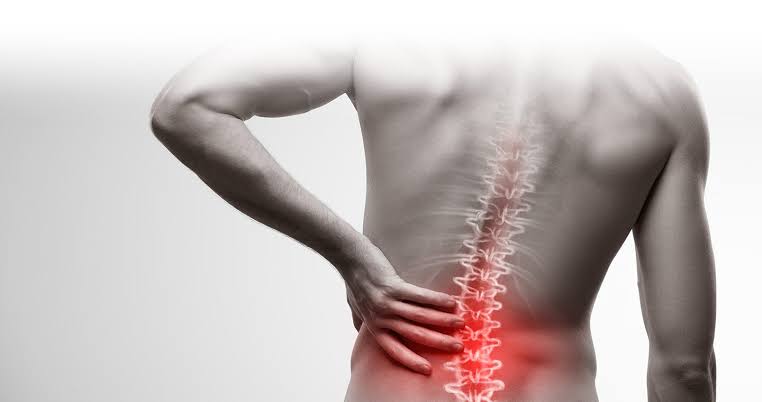Occasionally clients come to me in acute pain, for massage. While this isn’t unusual, the location and severity of their pain has made me suspect that they may have spinal disc problems. Read on to learn more about your herniated disc and you.
Massage is supportive of the surrounding spinal muscles. It is however, not a good idea to have deep work to the muscles directly around the herniated disc. Tight muscles are helping support the disc and it could make inflammation worse.
What is a herniated disc?
Herniated disc is described in many ways; pinched nerve, bugling, ruptured, torn, slipped, collapsed, protrusion, disease, black disc… the list goes on.
What is happening when a patient has a symptomatic herniated disc, the walls of the disc have become weak and the inner part of the disc ‘leaks’ (herniates) out of the cavity between the vertebrae.
The disc itself is not painful, but rather the disc protruding from it’s cavity puts pressure on a nerve outside the vertebrae. This produces radicular pain that may be refer to other parts of the body, such as from the lower back down the leg or from the neck down the arm.
Herniated disc can occur anywhere in the spine but most commonly occurs in the lower discs of the lumbar spine. Nerve pain in this region can refer down the leg. The most commonly known nerve pain is sciatica, as it puts pressure on the sciatic nerve. Each disc in the spine can cause a pattern of radiating pain through the body and into the extremities.
How is a herniated disc diagnosed?
Your GP or physical therapist will give you a physical examination. This will include nerve function, muscle strength and what pain you have on palpation and movement. A full medical history will help identify or rule out any other possible causes of your pain. Diagnostic tests such as a CT or MRI scan, are used to confirm the diagnosis.
What is the treatment for herniated disc?
Conservative treatments like exercise, physiotherapy and massage are recommended to manage the pain. Initially rest and ice to the local area is the best option before starting any physical therapy. Your GP may also prescribe anti inflammatory medications to ease the pain. These may be in tablet form or an injection around the local area.
Physical therapy, such as physiotherapy and prescribed exercise is a good option in learning how to care for your spine and manage your pain.
Pilates will help you learn how to use your motor skills properly, eliminating and poor posture or bad habits that may be causing the problem, and strengthening the surrounding muscles to help protect the spine.
Massage is supportive for reducing pain in the surrounding muscles and referral areas. Relaxation massage may be a good idea to help rest and reduce the stress of your pain.
Will I need surgery?
If the pain is not resolving, surgery will be recommended. The most common is discectomy, where a small portion of the protruding disc is removed.
Microsurgery has been developed in the last 10 to 15 years. Small incisions and less soft tissue dissection provide for significantly less postoperative discomfort and faster healing.
ALM Remedial provides remedial massage and myotherapy treatment for back pain. Servicing the Yarra Ranges and Dandenong Ranges areas.



